lexus LFA 2012 Technical Information / LEXUS 2012 LFA: INSIDE THE LFA
Manufacturer: LEXUS, Model Year: 2012, Model line: LFA, Model: Lexus LFA 2012Pages: 128, PDF Size: 5.91 MB
Page 51 of 128
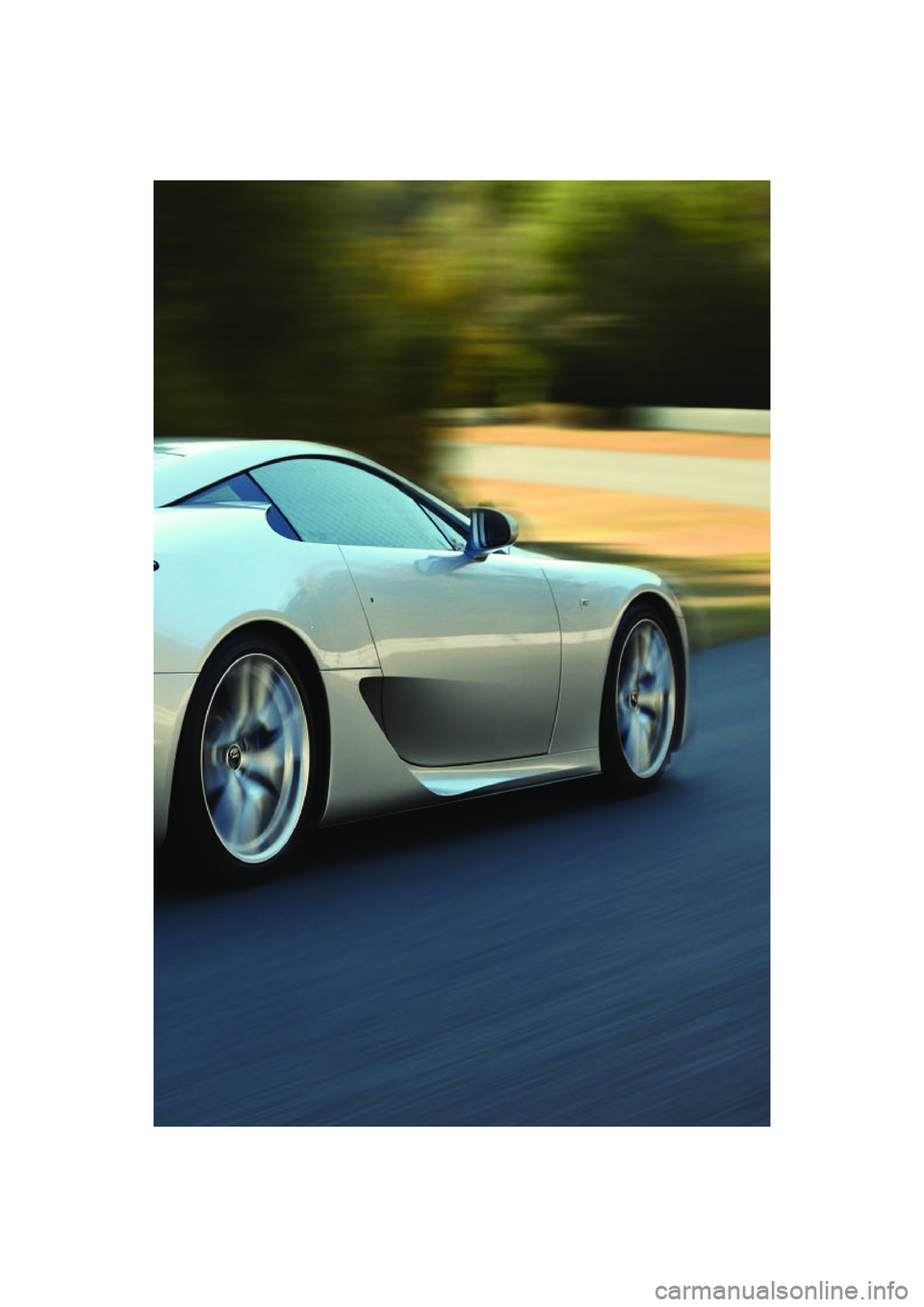
Page 52 of 128

50
Braking
The LFA is equipped with an ECB (Electronically Controlled Brake) system.
When the brake pedal is depressed, information on how much force is being used to
depress the pedal and the amount it is depressed is sent to the ECB computer. This
computer takes into account the vehicle’s overall condition using inputs from various
sensors and distributes the optimal amount of brake force to each individual wheel.
The ECB system uses an electric pump to generate hydraulic pressure, thereby
providing braking power without relying on engine vacuum. The use of this
technology ensures a consistent supply of effective braking power.
However, the detail behind the LFA brake system does not end with the ECB system.
Monoblock calipers and CCM (Carbon Ceramic Material) discs are just a few of the
other components that give the LFA its generous braking power. Furthermore, large
brake ducts have been proactively integrated in order to feed the brakes fresh, cold
air to keep them working at their optimum temperature for consistent performance.
Regarding the brake override system:
If the driver depresses the brake and accelerator pedals at the same time or if
the ECU judges that both acceleration and braking commands are being issued,
braking will be prioritized. The system will ignore the signal from the accelerator
pedal, close all throttle valves and provide the appropriate amount of braking force
demanded by the driver’s braking effort.
Page 53 of 128
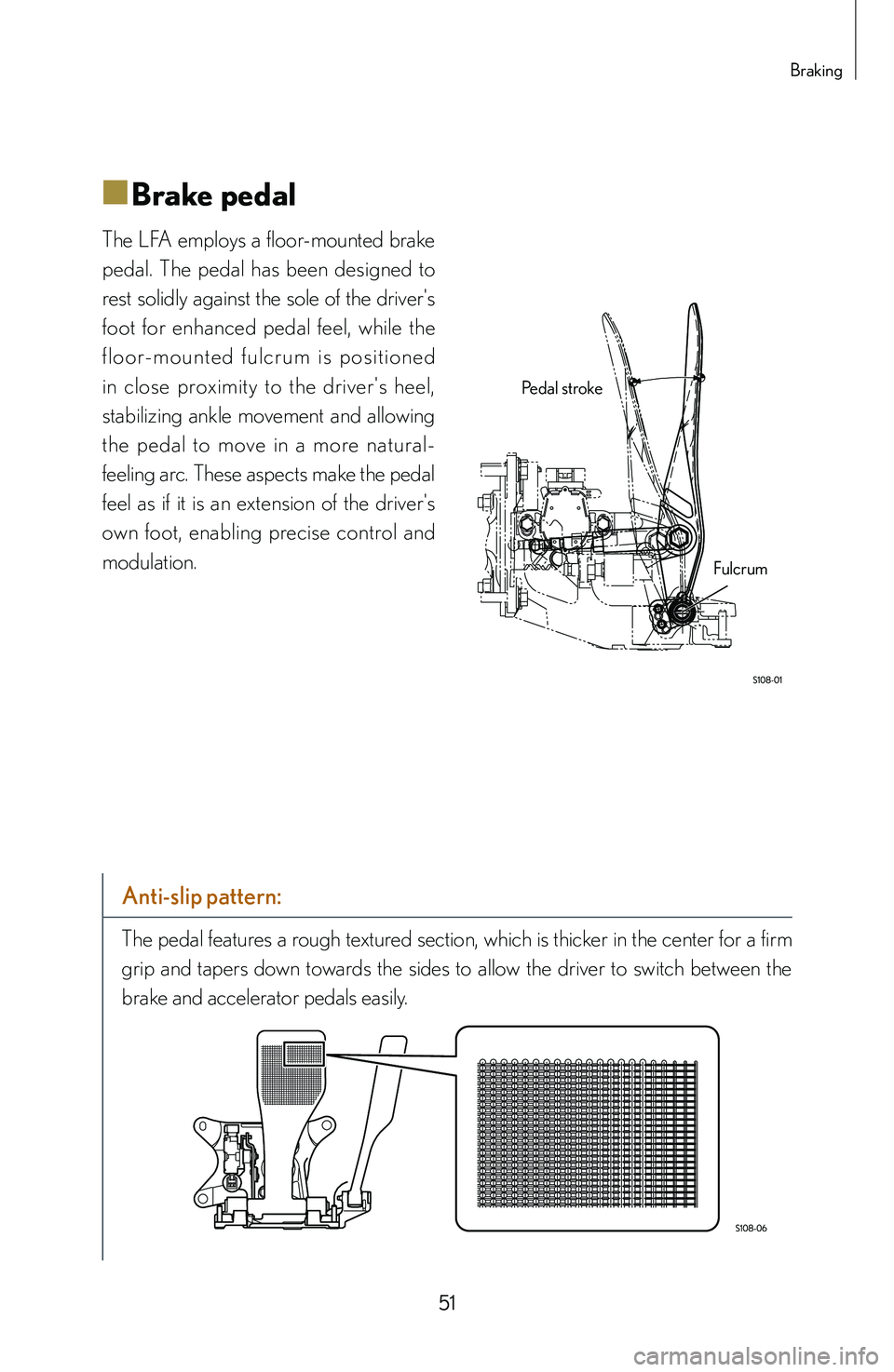
51
Braking
■
■Brake pedal
The LFA employs a floor-mounted brake
pedal. The pedal has been designed to
rest solidly against the sole of the driver's
foot for enhanced pedal feel, while the
f l o o r- m o u n t e d f u l c r u m i s p o s i t i o n e d
in close proximity to the driver's heel,
stabilizing ankle movement and allowing
the pedal to move in a more natural-
feeling arc. These aspects make the pedal
feel as if it is an extension of the driver's
own foot, enabling precise control and
modulation.
Anti-slip pattern:
The pedal features a rough textured section, which is thicker in the center for a firm
grip and tapers down towards the sides to allow the driver to switch between the
brake and accelerator pedals easily.
Pedal stroke
Fulcrum
Page 54 of 128
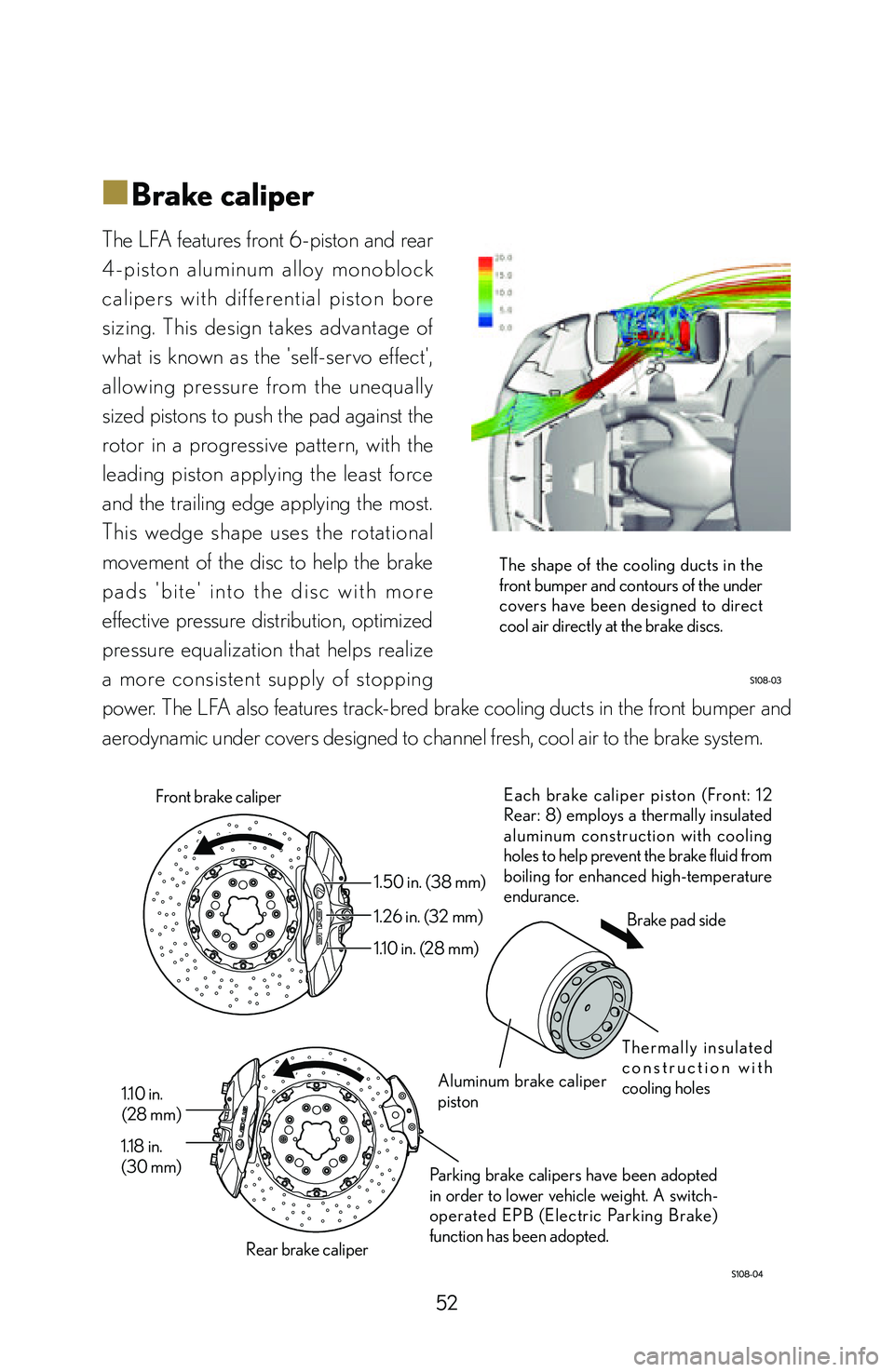
52
■
■Brake caliper
The LFA features front 6-piston and rear
4-piston aluminum alloy monoblock
calipers with dif ferential piston bore
sizing. This design takes advantage of
what is known as the 'self-servo effect',
allowing pressure from the unequally
sized pistons to push the pad against the
rotor in a progressive pattern, with the
leading piston applying the least force
and the trailing edge applying the most.
This wedge shape uses the rotational
movement of the disc to help the brake
p a d s ' b i t e ' i n t o t h e d i s c w i t h m o r e
effective pressure distribution, optimized
pressure equalization that helps realize
a more consistent supply of stopping
power. The LFA also features track-bred brake cooling ducts in the front bumper and
aerodynamic under covers designed to channel fresh, cool air to the brake system.
Each brake caliper piston (Front: 12
Rear: 8) employs a thermally insulated
aluminum construction with cooling
holes to help prevent the brake fluid from
boiling for enhanced high-temperature
endurance.
Parking brake calipers have been adopted
in order to lower vehicle weight. A switch-
operated EPB (Electric Parking Brake)
function has been adopted.
1.50 in. (38 mm)
1.26 in. (32 mm)
1.10 in. (28 mm)
1.10 in.
(28 mm)
1.18 in.
(30 mm) Front brake caliper
Rear brake caliper Aluminum brake caliper
piston
T h e r m a l l y i n s u l a t e d
c o n s t r u c t i o n w i t h
cooling holesBrake pad side
The shape of the cooling ducts in the
front bumper and contours of the under
covers have been designed to direct
cool air directly at the brake discs.
Page 55 of 128
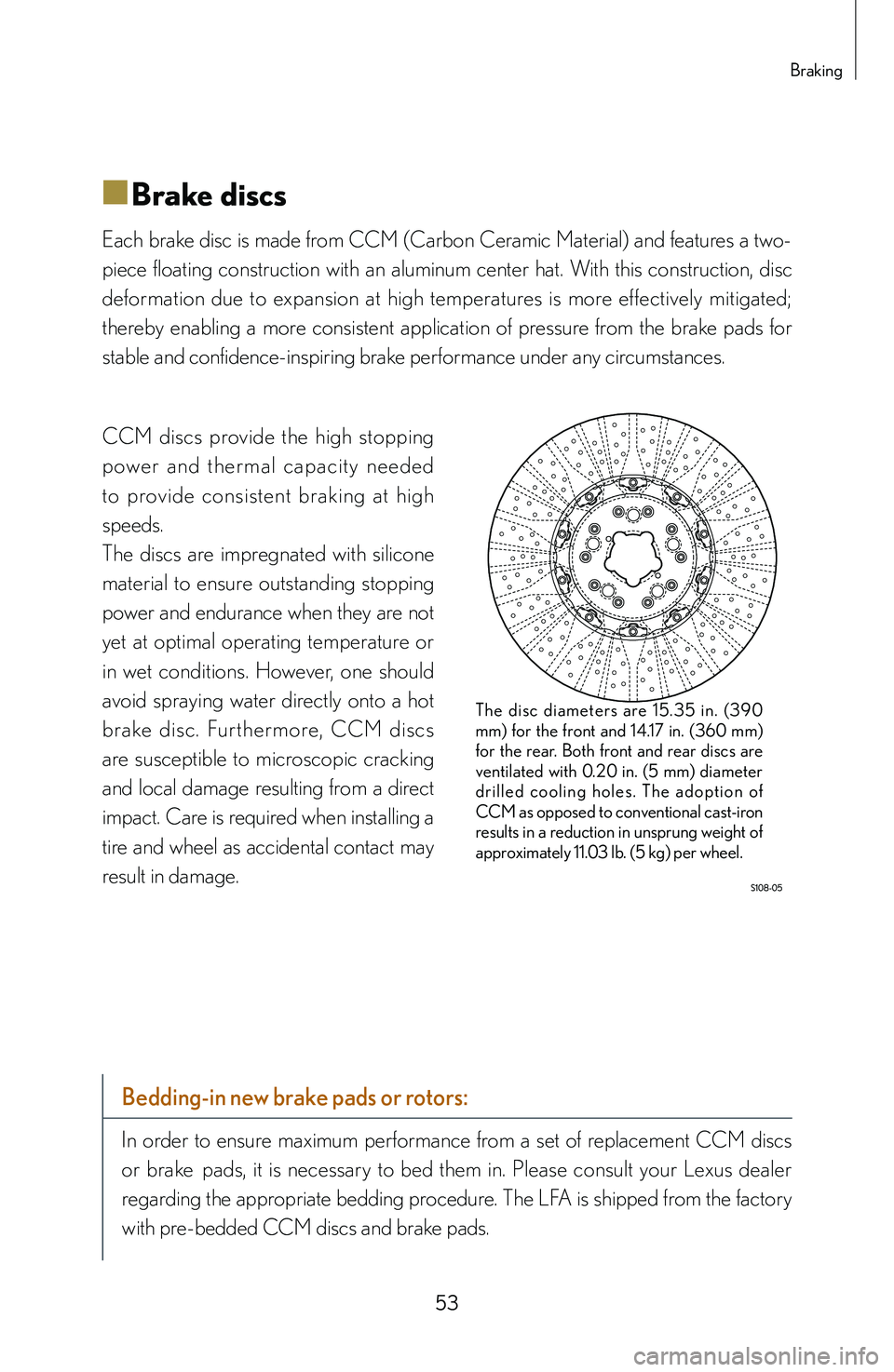
53
Braking
■
■Brake discs
Each brake disc is made from CCM (Carbon Ceramic Material) and features a two-
piece floating construction with an aluminum center hat. With this construction, disc
deformation due to expansion at high temperatures is more effectively mitigated;
thereby enabling a more consistent application of pressure from the brake pads for
stable and confidence-inspiring brake performance under any circumstances.
CCM discs provide the high stopping
power and thermal capacity needed
to provide consistent braking at high
speeds.
The discs are impregnated with silicone
material to ensure outstanding stopping
power and endurance when they are not
yet at optimal operating temperature or
in wet conditions. However, one should
avoid spraying water directly onto a hot
brake disc. Fur thermore, CCM discs
are susceptible to microscopic cracking
and local damage resulting from a direct
impact. Care is required when installing a
tire and wheel as accidental contact may
result in damage.
Bedding-in new brake pads or rotors:
In order to ensure maximum performance from a set of replacement CCM discs
or brake pads, it is necessary to bed them in. Please consult your Lexus dealer
regarding the appropriate bedding procedure. The LFA is shipped from the factory
with pre-bedded CCM discs and brake pads.
The disc diameters are 15.35 in. (390
mm) for the front and 14.17 in. (360 mm)
for the rear. Both front and rear discs are
ventilated with 0.20 in. (5 mm) diameter
d r i l l e d c o o l i n g h o l e s . T h e a d o p t i o n o f
CCM as opposed to conventional cast-iron
results in a reduction in unsprung weight of
approximately 11.03 lb. (5 kg) per wheel.
Page 56 of 128
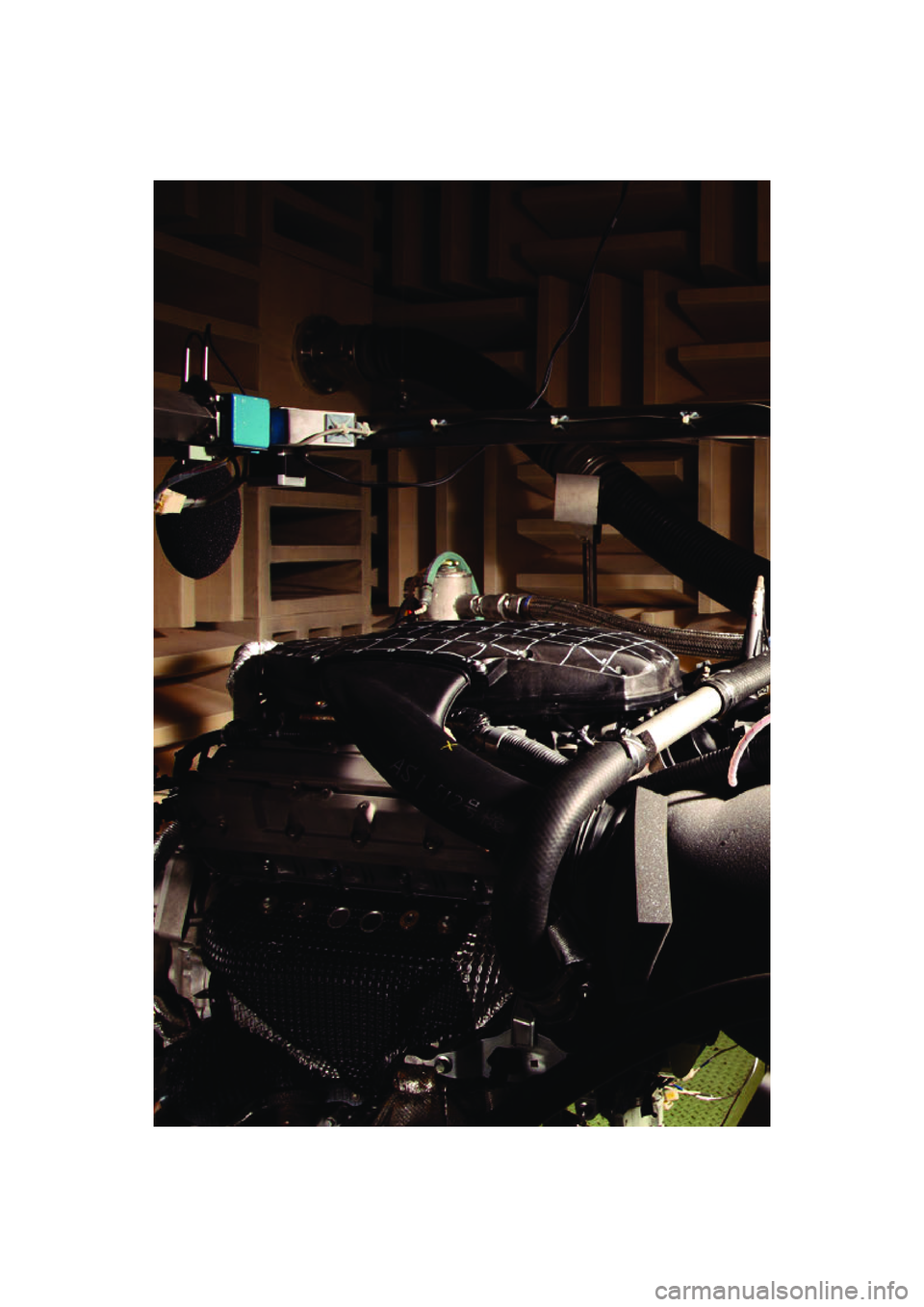
Page 57 of 128
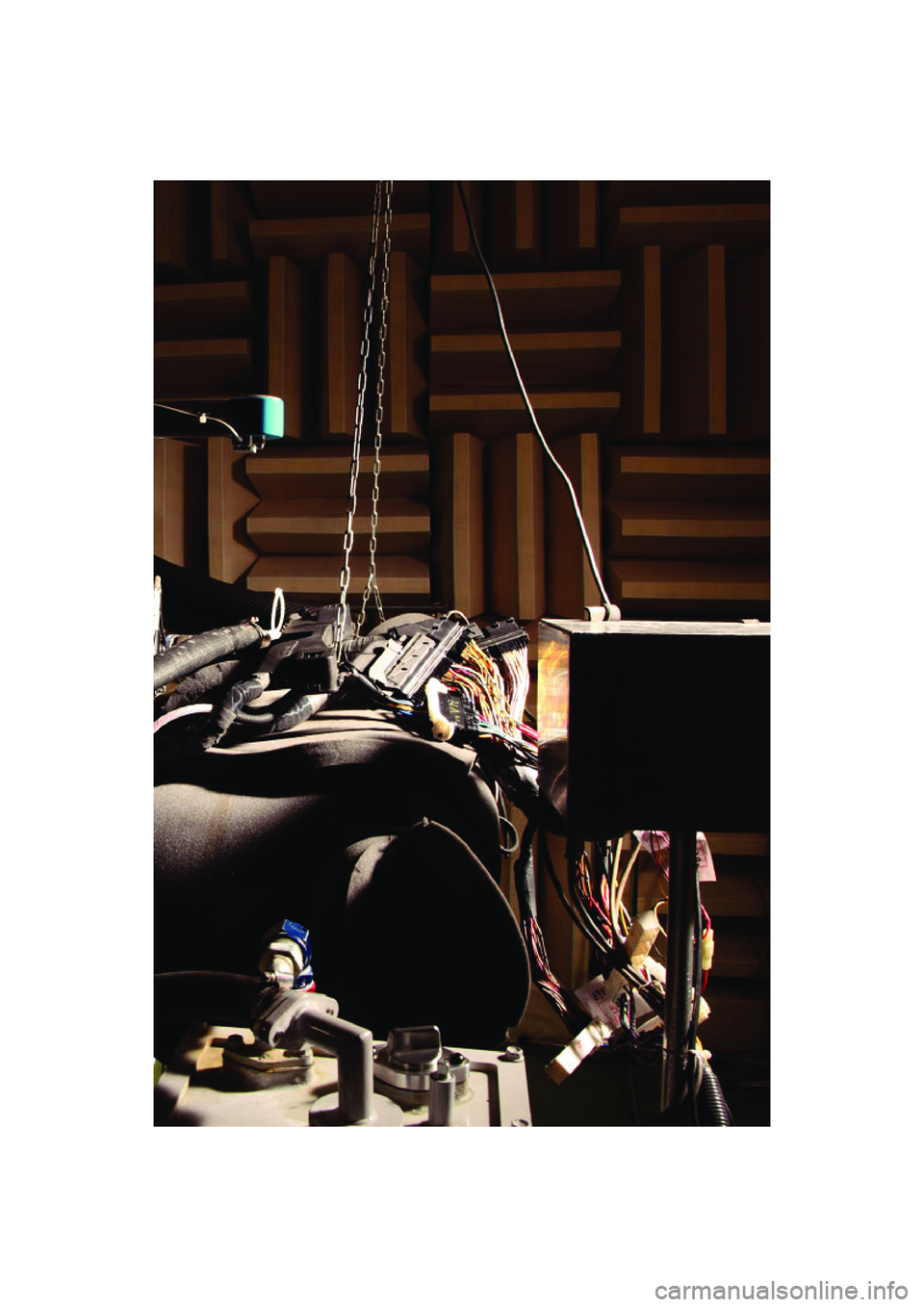
Page 58 of 128

56
Checking the engine
Components expected to operate at high speeds have been made as light and
precise as possible, realizing a superfast engine capable of revving from idle to 9,000
rpm in only 0.6 seconds.
In order to ensure adequate lubrication under high G-loads, a dry sump lubrication
system has been adopted.
The engine oil is cooled by a liquid-cooled oil cooler located in the valley between
each bank of cylinders and an air-cooled oil cooler housed within the front overhang.
In addition, two high-per formance radiators have been housed within the rear
overhang for an optimal front-rear weight balance.
A TFT LCD panel has been adopted to accurately transmit various information from
the engine to the driver. An analog-style digital tachometer displays engine speed
while other real-time engine information is displayed digitally for both superior visual
clarity and response.
An acrylic lens with a metal ring is positioned at the center of the meter to clearly
display the primary instruments and to create a three-dimensional appearance.
Page 59 of 128
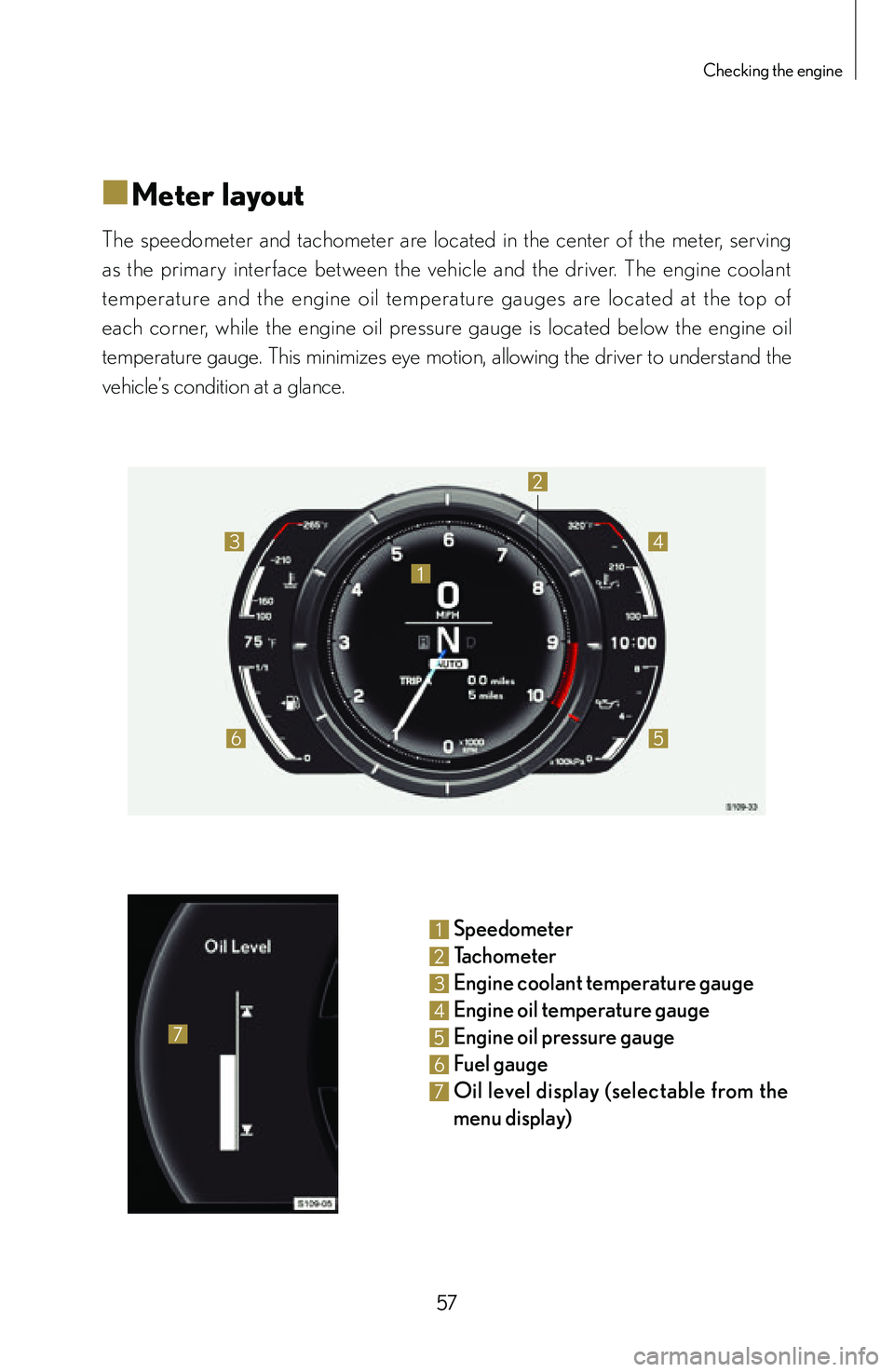
57
Checking the engine
■
■Meter layout
The speedometer and tachometer are located in the center of the meter, serving
as the primary interface between the vehicle and the driver. The engine coolant
temperature and the engine oil temperature gauges are located at the top of
each corner, while the engine oil pressure gauge is located below the engine oil
temperature gauge. This minimizes eye motion, allowing the driver to understand the
vehicle’s condition at a glance.
1
2
3
65
4
7
1 Speedometer
2 Tachometer
3 Engine coolant temperature gauge
4 Engine oil temperature gauge
5 Engine oil pressure gauge
6 Fuel gauge
7 Oil level display (s electable fr om th e
menu display)
Page 60 of 128
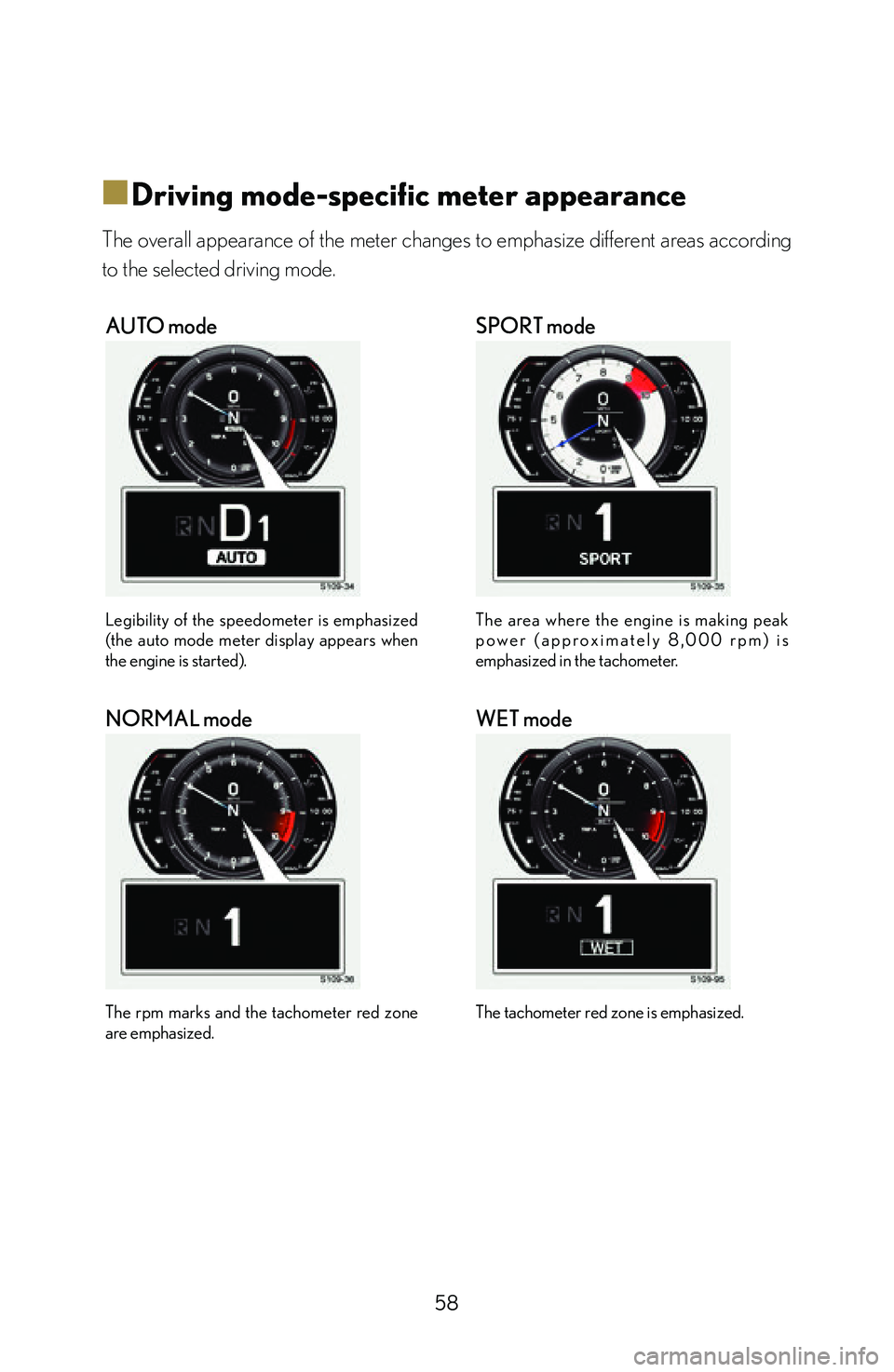
58
■
■Driving mode-specific meter appearance
The overall appearance of the meter changes to emphasize different areas according
to the selected driving mode.
AUTO mode
Legibility of the speedometer is emphasized
(the auto mode meter display appears when
the engine is started).
SPORT mode
The area where the engine is making peak
p o w e r ( a p p r o x i m a t e l y 8 , 0 0 0 r p m ) i s
emphasized in the tachometer.
NORMAL mode
The rpm marks and the tachometer red zone
are emphasized.
WET mode
The tachometer red zone is emphasized.